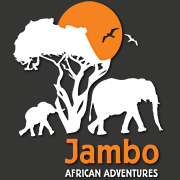Central Kalahari Reserve Overview
This last great true wilderness of Africa is a vast desert region covering some 80% of Botswana. The Deception Valley of the Central Kalahari is one of the remotest areas in the Kalahari. The Game Reserve is the second largest in Africa covering approximately 32,000 square miles of pristine wilderness and is the largest open eco-system remaining in Botswana. To explore the area is to travel back to an Africa of another time.
Deception Valley is host to huge herds of gemsbok, springbok, wildebeest and hartebeest attracted to the area by the flush of sweet grasses that flourish in the ancient valley following the rains. There is also a good chance of seeing the Kalahari lion, cheetah, brown hyena and meerkats, made famous by Mark & Delia Owens who undertook an eight-year research program into the desert predator ecology in the valley. As such, their book, the ‘Cry of the Kalahari’ makes essential reading for anyone undertaking a visit. The best time to visit is March to May, after the rains, when the Kalahari awakens with life. At this time, large concentrations of plains game and large numbers of birds can be seen
Climate
The desert climate of the Central Kalahari is at its most testing in the Dry season (April to October), with average daytime temperatures peaking at 33°C/91°F. The only exception is early in the morning, when you’ll need to rug up against the chill if you’re doing a game drive. The Wet season (November to March) cools things down with its intermittent showers.
Central Kalahari Game Reserve
By Road:
Central Kalahari GR is located 250km/155mi south of Maun, the gateway to the Okavango Delta. The drive takes about five hours. The park has four entrances. Most visitors driving to the park use the Matswere Gate, which is about 40km/24mi north of the popular Deception Valley. After rain, the road can be very bad and driving times will be longer.
By Air:
It is much easier to fly to one of the camps inside or outside the park by chartered plane. Or you can fly to Maun Airport (MUB) and rent a 4x4 to drive yourself to the game reserve. Alternatively, you can book a safari by 4x4, and you will be picked up by your driver-guide at the airport.
Big herds of desert-adapted antelope, such as springbok and oryx, can be seen walking along the dunes. Predators are easy to spot on the plains. The Kalahari black-maned lions are particularly stunning, and cheetah thrive in this open country. Lucky visitors might come across a pack of wild dogs.
The Central Kalahari offers good bird watching. Over 250 species have been recorded, and the park is particularly good for raptors due to the high volume of small animals for them to feed on. Ostrich is common in the area.
Best Time to Visit
For prime wildlife viewing and fewer crowds, you should avoid the driest times of year and visit in the Wet season (November to March). Besides the low-season prices, this is also when animals make the most of the returning rain by gathering around the pans in Deception Valley. The trade-off is that some roads can turn into muddy bogs.








